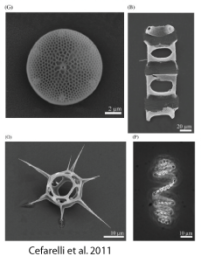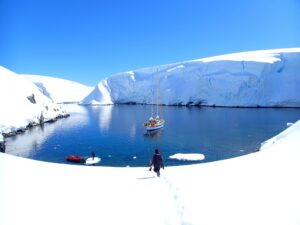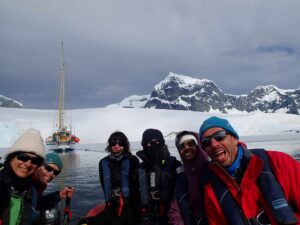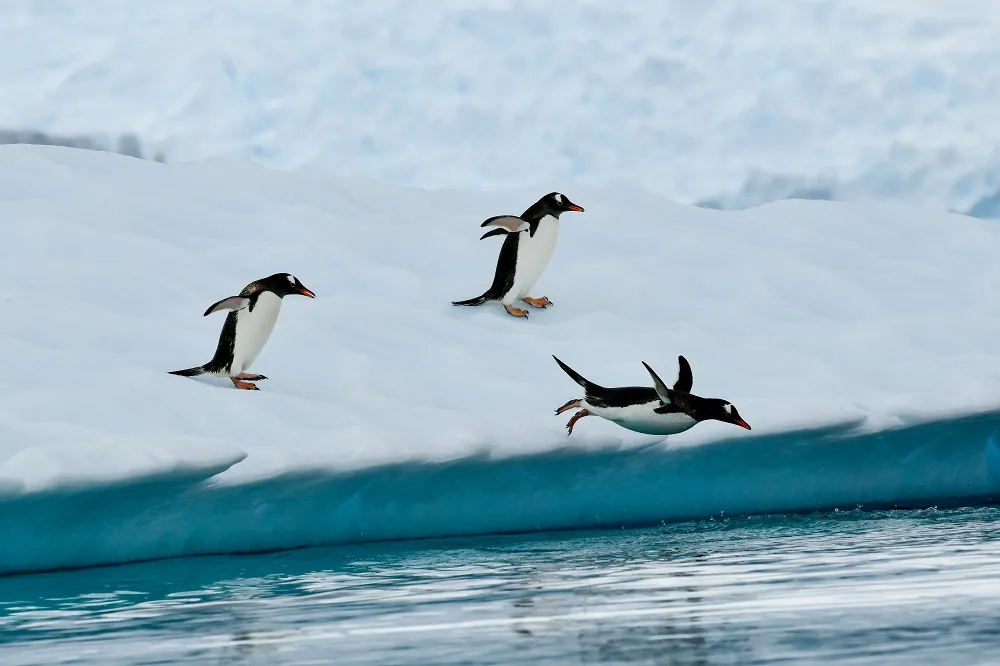New Citizen Science Project
Quixote Expeditions joins new Citizen Science Project
What do whales, Penguins, and seals all have in common? Yes you can find them in Antarctica, but they also all eat the same thing – Krill! (and probably the reason they all hang out in the same place, because the Krill hang out in Antarctica in high numbers in the southern summer). But why so much krill (tiny shrimp like creatures) and what do the krill eat? The krill eat even smaller creatures – Phytoplankton. Thus these super tiny creatures are the basis of the whole food chain for small penguins and huge humpback whales! Phytoplankton are organisms that photosynthesize, thus in the southern summer, where its nearly 24 hour daylight, they are pretty happy and can even have Phytoplankton “blooms”, where there are so many it makes the water look cloudy.

But when do they bloom and why during the season. Scientists are asking this question. One way to look at variables is to collect samples from fjords with glaciers. The glaciers inject fresh water into the marine system and thus down the length of the fjord you will varying salinity. Nature gives us our own proving ground.
A group at Scripps Institution of Oceanography has put together a project, FjordPhyto, to help answer these questions. One of the key challenges is getting enough samples. Getting to Antarctica and taking all these samples can be difficult and challenging, so what better way to get samples than to partner with cruise ships that are going to Antarctica throughout the summer season. FjordPhyto has partnered with vessels that are members of the International Association of Antarctica Tour Operators (IAATO) to collect data – collect water to then analysis the phytoplankton and to use probes to get the temperature and salinity of the water. Passengers will also get to upload photos of phytoplankton (taken from a microscope) to iNaturalist to help figure out what types of plankton we’ve found.

Quixote Expeditions and our vessel, Ocean Tramp, are very excited to be one of the vessels chosen this year to participate. Our passengers will get to help collect samples and will also be able to view what we collect under a microscope onboard! (interested? check out some of our trips this year). We just received our kit of equipment and now we will get familiar with it, test it out, and get ready to deploy it in Antarctica this year!!!
A big thanks to Allison Lee who is leading this project and to Dr. Maria Vernet and the Vernet Lab at Scripps. This project is part of the Public Participation in STEM (Science, Technology, Engineering, Math) Research extension to the existing NSF award entitled “Collaborative Research: Fjord Ecosystem Structure and Function of the West Antarctic Peninsula — Hotspots of Productivity and Biodiversity? (FjordEco)” NSF award # PLR-1443705
Learn more about all of Quixote Expedition’s Science Initiatives on our SCIENCE PAGE.








